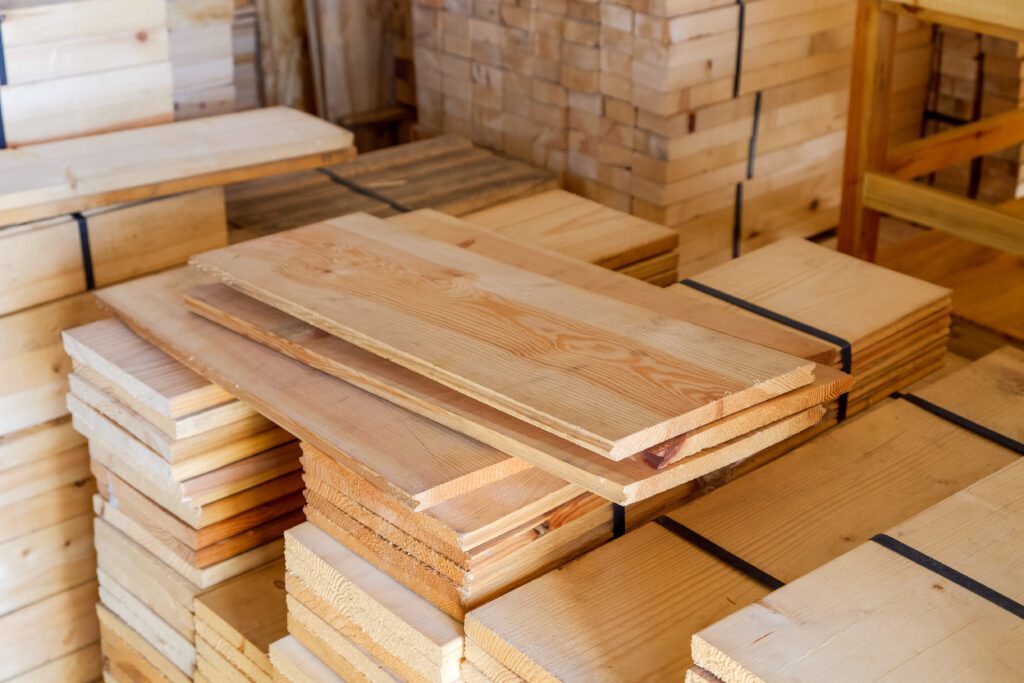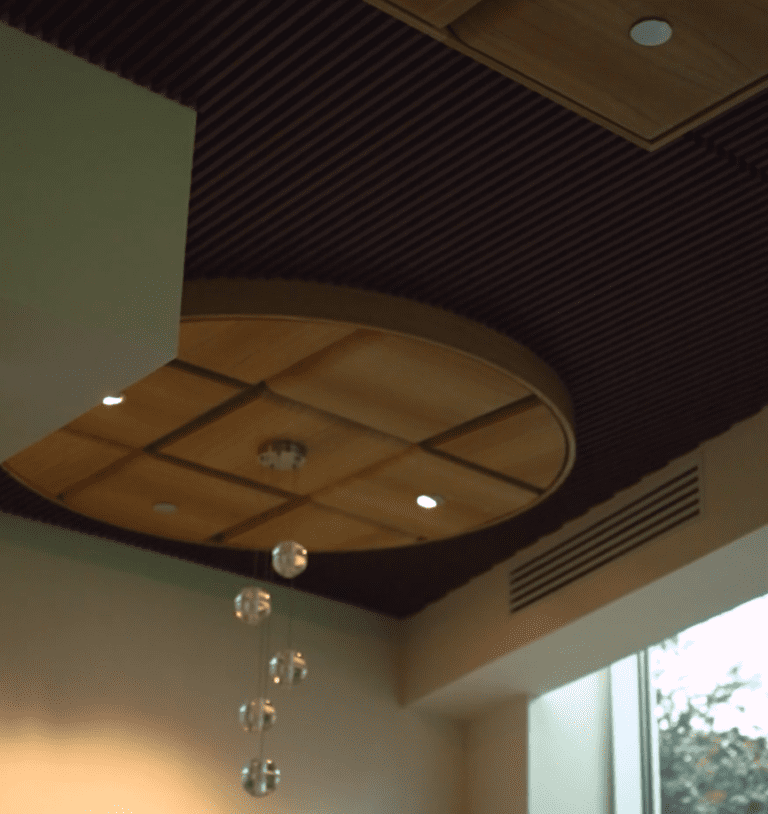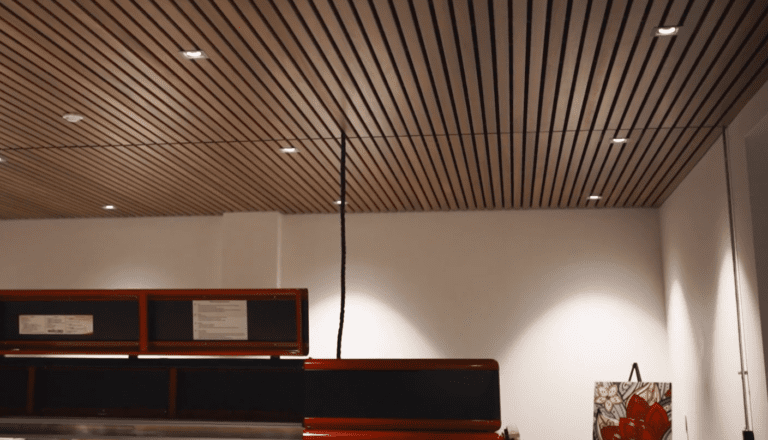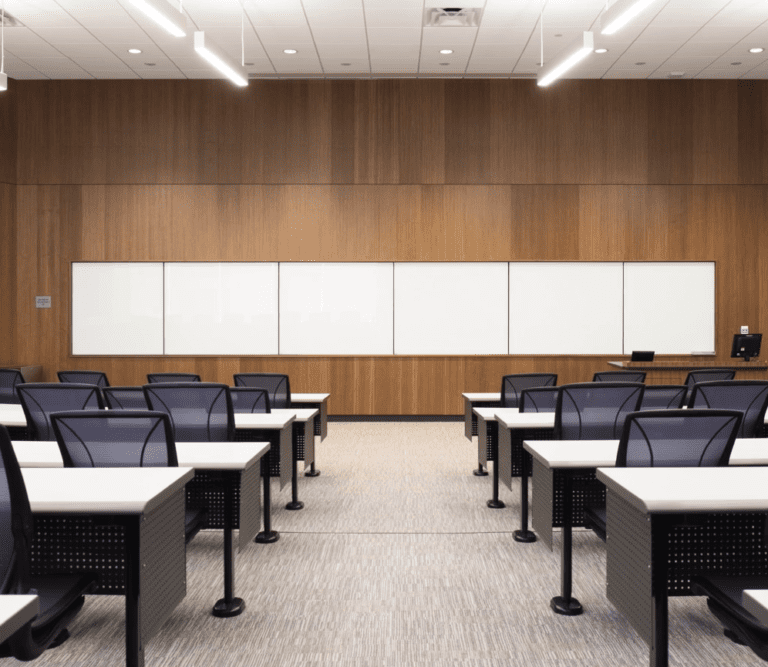When planning a wood panel interior design project, one of the most important decisions you’ll make is the choice of wood. The wood you select should be a perfect match for your project in terms of its color, grain patterns, and functional characteristics.
The two primary classifications of wood are hardwood and softwood. While hardwood does tend to be stronger, hardness is not actually the characteristic that sorts woods into these two groups. Rather, hardwoods come from deciduous trees, such as maple and oak, while softwood comes from coniferous trees, such as cedar and pine.
In the sections below, we’ll break down the pros and cons of hardwoods and softwoods. Then, we’ll briefly review the key considerations for selecting a high-quality hardwood or softwood for your wood panel design project.
Advantages and Disadvantages of Hardwood
Compared to softwood, many hardwood tree species take longer to reach harvest. This slow growth creates lumber that’s denser and harder.
Advantages of Using Hardwood for Panel Design
Hardwood offers a number of performance advantages. Hardwood is:
- Durable
- Resistant to wear and tear
- Resistant to dents and scratches
- Resistant to moisture and humidity
Along with its performance benefits, hardwood is attractive, featuring beautiful natural grain patterns and a variety of deep, dark hues.
Disadvantages of Using Hardwood for Panel Design
Hardwood is dense, which results in performance advantages as well as a few drawbacks. Dense wood is heavier and sometimes trickier to work with. For example, driving a nail through a hardwood board is likelier to split open the wood.
Hardwood is also generally more expensive than softwood and has limited availability in some regions.
Advantages and Disadvantages of Softwood
Softwood is generally faster-growing, more lightweight, and softer than hardwood.
Advantages of Using Softwood for Panel Design
Softwoods are more abundant than hardwoods. Common softwoods include fir, cedar, pine, and hemlock.
Softwoods are:
- Widely available
- Less expensive than hardwoods
- Less dense than hardwood and easy to work with
It’s important to note that softwood characteristics vary widely from species to species. For example, some softwoods, such as Douglas fir, are harder than many hardwoods.
Disadvantages of Using Softwood for Panel Design
Softwoods are generally considered softer and less durable than hardwoods. Softwoods may be prone to wear and tear and less resistant to moisture and humidity. Compared to hardwoods, softwoods also tend to feature less distinctive natural grain patterns.
Choosing Between Hardwood and Softwood: Factors to Consider
A long list of wood species may be used to make wood panel systems. These include softwoods like pine or spruce and hardwoods like oak, ash, and many others.
When choosing between a hardwood or softwood panel system, here are a few factors to consider.
Purpose and Setting for the Panel System
If you expect your wood panel system to be exposed to high levels of moisture, humidity, or wear and tear, then a strong and durable hardwood is recommended. For less hazardous settings, you can prioritize aesthetic qualities and choose the wood that best serves your design goals.
Project Budget
The choice of wood is one of several factors that impacts the total cost of a wood panel system. Rare woods and ones that are more difficult to work with are pricier than common woods like pine and maple.
Availability and Sourcing of the Wood
Not all woods are readily available in all places at all times. Even if you’re willing to pay up for a certain wood, you may wish to consider sustainable sourcing in your decision. Keep in mind that some of the very best woods are also some of the most widely available options. That means that quality, sustainability, and affordability often go hand in hand.
Design Considerations
Different woods offer different hues, tones, and grain styles. Choose one that best matches your design goals and complements the surrounding aesthetic.
A few examples of hardwood panel design themes include:
- Oak panels with intricate carvings for a traditional, distinguished aesthetic
- Red-tinted maple panels for a sleek, modern design
- Cherry panels that establish rich, warm tones
Examples of popular softwood panel design themes include:
- Pine panels for a rustic, country-style aesthetic
- Cedar panels with a natural, outdoorsy feel
- Spruce panels with a light and airy look
Many of the most popular woods can be easily beautified and color-adjusted with stain finishes, which makes possible a high degree of customization for every wood panel project.
Choose a Beautiful Wood Panel for Your Next Design Project
Whatever wood you prefer, Rulon International can help bring your design vision to life. View our project gallery or contact our team today to discuss your wood panel project.




